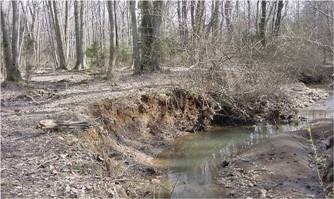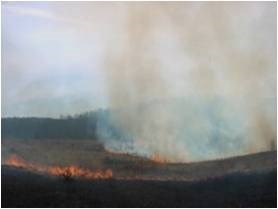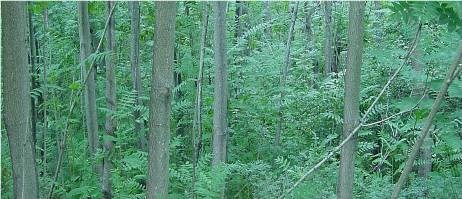
NPS photo Agriculture Historical farming practices have left lasting scars upon the landscape. When central Virginia was originally deforested and put into agriculture in the 1700s, little thought was given to sediment control, resulting in a severe loss of fertile topsoil. With each harvest, the soil lost volume and nutrients, neither of which was replaced before the next growing season. When the soil was exhausted, families abandoned the old fields and cleared new land. Many farmers simply migrated away to where land was available in the western U.S. Farming is still used in the park today to maintain an open landscape that is reflective of the agrarian past. Modern management involves soil conservation practices and regular fertilizer application to maintain soil viability. Most of the agricultural land is currently used for hay production or pasture for cattle. Both uses can have good and bad effects on the local soil, water quality, vegetation, and wildlife. Negative impacts include soil disturbances that promote erosion and the spread of invasive plants, soil compaction, and disruption of grassland bird nesting. Grazing livestock can also clear the understory of forested areas, which essentially removes the younger generation of trees. Conversely, by using native grasses for hay production, changing hay cutting dates, limiting the number of cattle in a field and other measures, wildlife habitat can be enhanced.
B. Stewart Fire 
NPS photo |
Last updated: January 11, 2016
